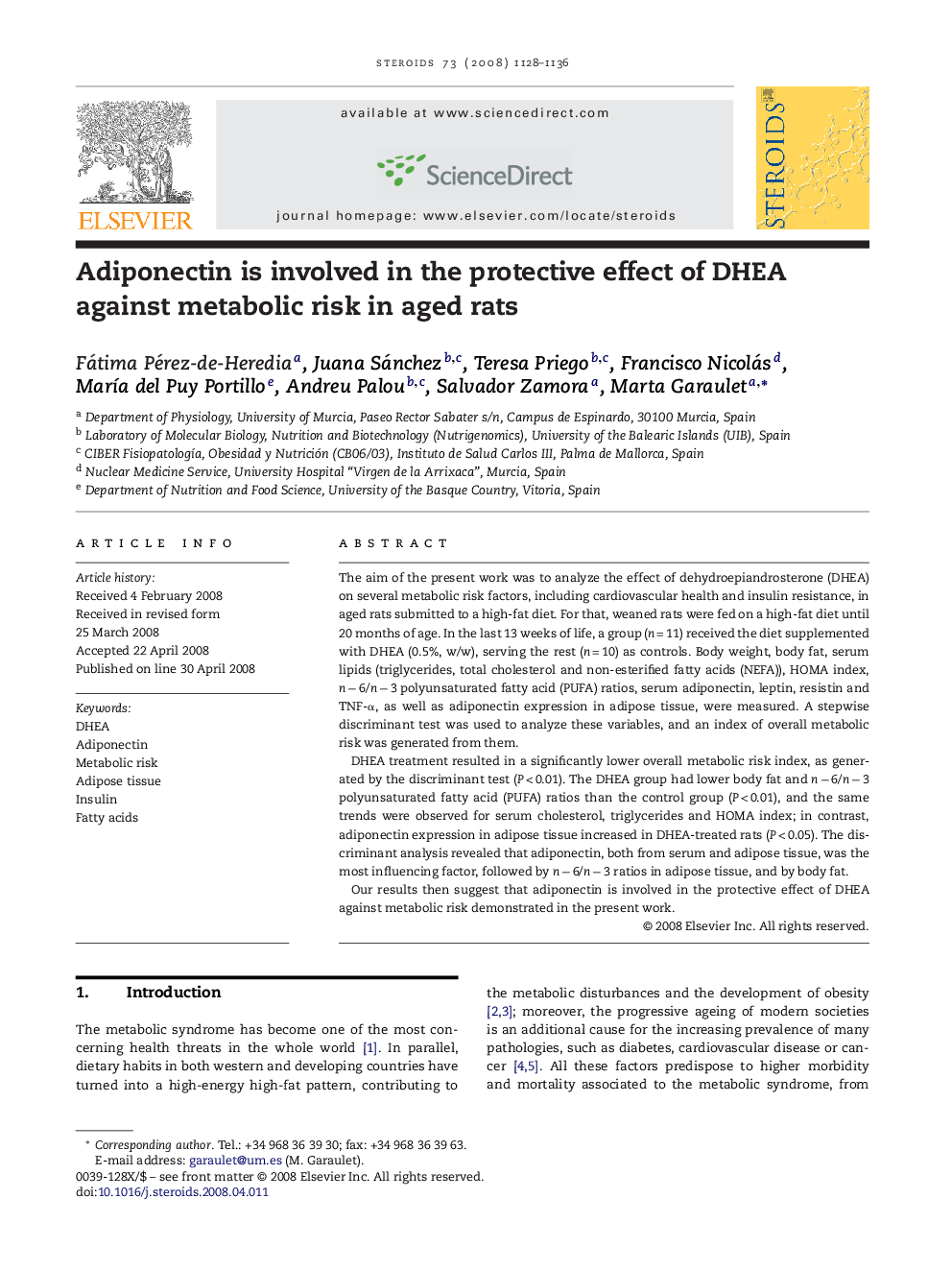| کد مقاله | کد نشریه | سال انتشار | مقاله انگلیسی | نسخه تمام متن |
|---|---|---|---|---|
| 2029430 | 1070586 | 2008 | 9 صفحه PDF | دانلود رایگان |

The aim of the present work was to analyze the effect of dehydroepiandrosterone (DHEA) on several metabolic risk factors, including cardiovascular health and insulin resistance, in aged rats submitted to a high-fat diet. For that, weaned rats were fed on a high-fat diet until 20 months of age. In the last 13 weeks of life, a group (n = 11) received the diet supplemented with DHEA (0.5%, w/w), serving the rest (n = 10) as controls. Body weight, body fat, serum lipids (triglycerides, total cholesterol and non-esterified fatty acids (NEFA)), HOMA index, n − 6/n − 3 polyunsaturated fatty acid (PUFA) ratios, serum adiponectin, leptin, resistin and TNF-α, as well as adiponectin expression in adipose tissue, were measured. A stepwise discriminant test was used to analyze these variables, and an index of overall metabolic risk was generated from them.DHEA treatment resulted in a significantly lower overall metabolic risk index, as generated by the discriminant test (P < 0.01). The DHEA group had lower body fat and n − 6/n − 3 polyunsaturated fatty acid (PUFA) ratios than the control group (P < 0.01), and the same trends were observed for serum cholesterol, triglycerides and HOMA index; in contrast, adiponectin expression in adipose tissue increased in DHEA-treated rats (P < 0.05). The discriminant analysis revealed that adiponectin, both from serum and adipose tissue, was the most influencing factor, followed by n − 6/n − 3 ratios in adipose tissue, and by body fat.Our results then suggest that adiponectin is involved in the protective effect of DHEA against metabolic risk demonstrated in the present work.
Journal: Steroids - Volume 73, Issue 11, October 2008, Pages 1128–1136